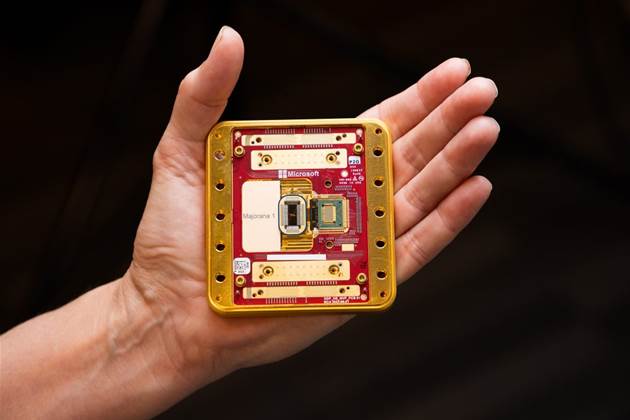Microsoft pledges to finalize the transition to quantum-resistant cryptography by 2033
We independently review everything we recommend. When you buy through our links, we may earn a commission which is paid directly to our Australia-based writers, editors, and support staff. Thank you for your support!

Quick Overview
- Microsoft intends to finalize its shift to quantum-safe encryption by 2033, ahead of the 2035 international deadline.
- Scalable quantum computing presents dangers to existing encryption techniques, potentially endangering digital security.
- Microsoft’s methodology encompasses a three-step incorporation of quantum-safe cryptography within its offerings.
- The company partners with worldwide standards organizations to guarantee global compatibility of quantum-safe standards.
- Microsoft’s Majorana 1 quantum processor signifies a major advancement in its journey towards quantum safety.
Recognizing the Quantum Threat
As quantum computing technology evolves, it has the capability to undermine current cryptographic systems. Microsoft cautions that forthcoming scalable quantum computers could dismantle existing public-key cryptography, threatening digital signatures, authentication processes, and identity validation.
Microsoft’s Proactive Strategy
Microsoft is devoted to shifting all its products and services to quantum-resistant cryptographic techniques by 2033. This initiative is driven by the anticipated power of quantum computing and the possibility of the “Harvest Now, Decrypt Later” (HNDL) attack method, wherein encrypted information could be retained now and decrypted later when quantum capabilities advance.
Three-Step Transition Strategy
Microsoft’s transition plan is organized into three stages:
Stage 1: Foundational Security
The initial stage includes the incorporation of post-quantum cryptography algorithms into SymCrypt, Microsoft’s main cryptographic library, ensuring uniform security across platforms like Windows, Azure, and Microsoft 365.
Stage 2: Core Infrastructure
The second stage is centered on upgrading core infrastructure services, including authentication and key management systems, to accommodate quantum-safe encryption.
Stage 3: Complete Integration
The concluding stage aims to apply quantum-safe measures throughout all Microsoft services, facilitating early adoption of these capabilities by 2029 and establishing them as defaults where feasible.
Working Together for Global Standards
Microsoft is collaborating with essential regulatory and technical organizations like the National Institute of Standards and Technology (NIST), Internet Engineering Task Force (IETF), and International Organization for Standardization (ISO) to establish consensus on quantum-safe encryption standards. This cooperation guarantees global compatibility and a smooth transition to new cryptographic standards.
Overview
Microsoft is making substantial efforts to protect its services against impending quantum computing threats. By outlining a thorough transition to quantum-resistant cryptography, the company is establishing a proactive benchmark in the tech sector. With strategic alliances and staged implementations, Microsoft is prepared to spearhead the effort in preserving digital security in the quantum age.
Q: Why is Microsoft prioritizing quantum-resistant cryptography at this time?
A:
Microsoft seeks to counteract potential future threats from quantum computing that may undermine current encryption techniques. By taking early action, they can facilitate a seamless transition and uphold security standards.
Q: What does the “Harvest Now, Decrypt Later” scenario entail?
A:
This concept involves malicious actors saving encrypted data today with the plan to decrypt it later when quantum computers are capable of breaching existing encryption mechanisms.
Q: What is the functioning of Microsoft’s three-step approach?
A:
The method includes embedding quantum-safe cryptography into foundational security elements, upgrading the core infrastructure, and thoroughly integrating these strategies across all services.
Q: What is the role of global standards organizations in this transition?
A:
These organizations assist in aligning quantum-safe encryption standards internationally, ensuring interoperability and a cohesive transition to new cryptographic techniques.
Q: What importance does Microsoft’s Majorana 1 quantum processor hold?
A:
The Majorana 1 processor symbolizes a critical leap in Microsoft’s quantum research, bolstering the company’s wider objectives in attaining quantum-safe cryptography.
